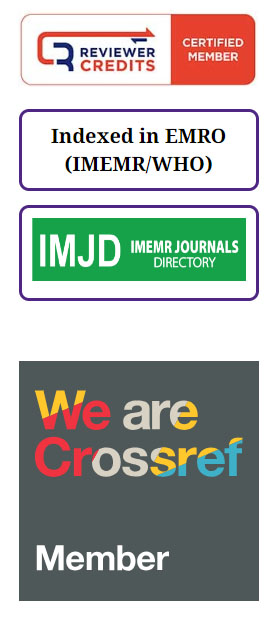Air Pollution and Respiratory Health among School-Going Children in Peshawar
Keywords:
Air pollution, Respiratory health, Children, Peshawar, Public healthAbstract
Background: Air pollution is a leading environmental risk factor worldwide, with children being particularly vulnerable due to developing lungs and higher exposure per body weight. Peshawar is among the most polluted cities in Pakistan, yet evidence on its impact on child respiratory health is limited.
Methods: A cross-sectional study was conducted among 400 school-going children aged 8–15 years from urban (high-traffic) and semi-urban areas of Peshawar. Data on respiratory symptoms were collected using the International Study of Asthma and Allergies in Childhood (ISAAC) questionnaire (6). Ambient particulate matter (PM2.5, PM10) was measured outside selected schools using portable air quality monitors. Logistic regression was used to assess associations between air pollution exposure and respiratory outcomes.
Results: The prevalence of respiratory symptoms was: chronic cough 22.5%, wheezing 18.0%, shortness of breath 15.2%, and physician-diagnosed asthma 11.8%. Children from high-pollution schools had significantly higher prevalence of wheeze (23.5% vs 12.5%, p<0.01) and asthma (15.6% vs 7.2%, p=0.02). Logistic regression showed that exposure to higher PM2.5 levels (>75 µg/m³) was associated with increased odds of wheezing (AOR=2.1; 95% CI: 1.2–3.6) and asthma (AOR=1.9; 95% CI: 1.1–3.4).
Conclusion: Air pollution in Peshawar is strongly associated with respiratory problems among school children. Urgent public health interventions are needed, including stricter regulation of traffic emissions and awareness programs targeting schools and parents.
Keywords: Air pollution, Respiratory health, Children, Peshawar, Public health




